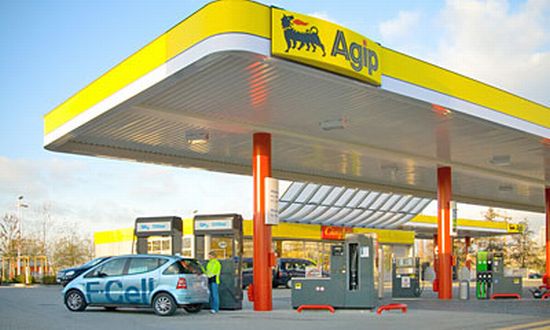Last year the solar company HyperSolar, Inc. filed a patent application for a solar powered system that creates renewable methane gas from water, which it has been testing out at California’s Salton Sea. Recently the company announced that it has completed a proof-of-concept prototype for a solar-powered hydrogen generator.
Hydrogen can be produced from plain water through a reaction touched off by electricity. However, it takes a significant amount of energy to split hydrogen atoms from water molecules. If the energy in question is a fossil fuel then hydrogen is a wash in terms of reducing greenhouse gas emissions.
A solution is to develop hydrogen production systems that are integrated with solar power, essentially mimicking the natural process of photosynthesis.
One notable example of this approach is MIT researcher Daniel Nocera’s solar powered “artificial leaf,” which is based on a small solar module about the size of a playing card.
Hypersolar’s system goes even farther down the size spectrum, using tiny particles consisting of a nanoscale solar device and a protective plastic coating.
The particles float in water, and the coating enables them to function in hostile environments including sea water, wastewater or stormwater runoff. That gives the system a leg up on conventional hydrogen systems, which require purified water.
The reaction takes place at ambient temperatures, so it can take place in a low-cost glass vessel or even an ordinary plastic bag. The prototype featured a plastic bag placed in wastewater from a pulp and paper mill.
Hypersolar has recently collaborated with the UC-Santa Barbara College of Engineering to bring the technology closer to commercial development, with a focus on using municipal and industrial wastewater as feedstocks. Potentially, the system could be scaled up to form hydrogen “farms.”

